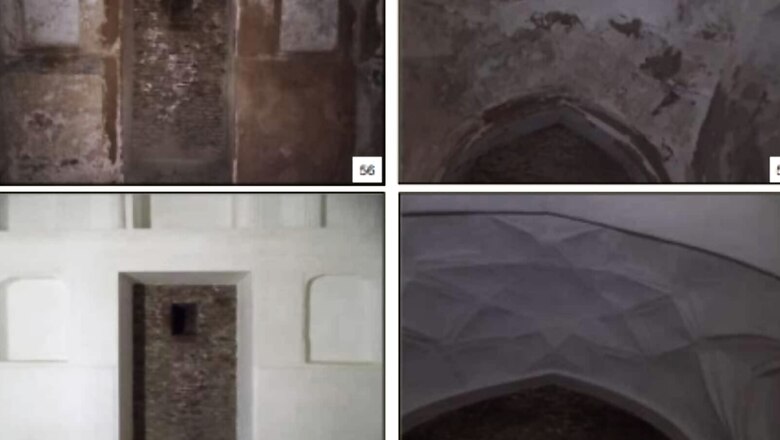
views
Days after the Allahabad High Court dismissed a plea seeking a “fact-finding inquiry” into the history of the Taj Mahal and the “opening of 22 rooms”, reports show a newsletter issued by the Archaeological Survey of India (ASI) had released pictures of the restoration work done inside the cells before the court’s order.
“The work of maintenance of underground cells on the river side was taken up. Decayed and disintegrated lime plaster was removed and replaced by laying of lime plaster and traditional lime processing before application,” it read under section Structural Conservation in ASI’s January 2022 newsletter.
Click on the link to download/view the January issue of @ASIGoI's Newsletter.https://t.co/tIJmE46UR4 pic.twitter.com/UKWsTA2nPZ— Archaeological Survey of India (@ASIGoI) May 9, 2022
The Lucknow bench of justices D.K. Upadhyay and Subhash Vidyarthi on May 12 pulled up the lawyer of petitioner Rajneesh Singh, who is the media in-charge of the BJP’s Ayodhya unit, for filing the PIL in a “casual” manner and dismissed the plea, stating the petitioner could not point out as to which of his legal or constitutional rights were being infringed.
Singh, seeking a fact-finding inquiry into the history of the Taj Mahal over contentions of likely evidence of ancient Hindu idols inside its premises, also called for the opening of doors of the monument’s “22 rooms” to see “the truth, whatever it is”.
Ahead of the High Court’s decision, top Archaeological Survey of India officials had said it is unlikely that the petition will be fruitful as records scrutinised till now over the years and restoration work done just three months ago “have not pointed to the presence of any idols”.
As per officials, there are over 100 cells in various portions of the mausoleum complex that have remained inaccessible to the public for security and safety reasons. “The petitioner’s claim of 22 rooms being permanently locked is factually incorrect as conservation work – including filling of cracks, re-plastering and anti-ageing treatments – are periodically done. In fact, the most recent work cost us Rs 6 lakh,” a senior ASI official had told Times of India.
The ASI has also undertaken structural repairs at the gateways around the Taj Mahal in the Tajganj area, namely Katra Umar Khan Gate, Katra Resham Gate, Katra Fulel Gate, Dakhani Darwaza.
“These are grand double arched gateways and served as entry and exit for people residing in this
area. Constructed of lakhori brick and lime they are one of the few original remnants of the settlement of Tajganj. The work of removal of old and decayed lime plaster and lakhauri bricks was done with the new one. For repairs roof of the Katra Fulel Gate was opened and old decayed lime mortar, etc. was removed and replaced with the new one. The work is in progress,” as per the newsletter.
Officials told The Indian Express, that conservation work was carried out inside the cells in Taj Mahal between December 2021 and February 2022. “The published pictures were from December 2021. Even after that a lot more work was done and pictures were taken,” officials said.
ASI has stated that 100 public cells located underground, higher levels of the main mausoleum, corner ‘burjs,’ the four minarets, inside the baolis (near the mosque), and on the Chameli floor on the east, west, and north sides of the Taj Mahal. Apart from these, several areas of the other nearby world heritage monuments, such as Agra Fort and Fatehpur Sikri, have been closed to the public for years due to security concerns.
Read all the Latest India News here




















Comments
0 comment